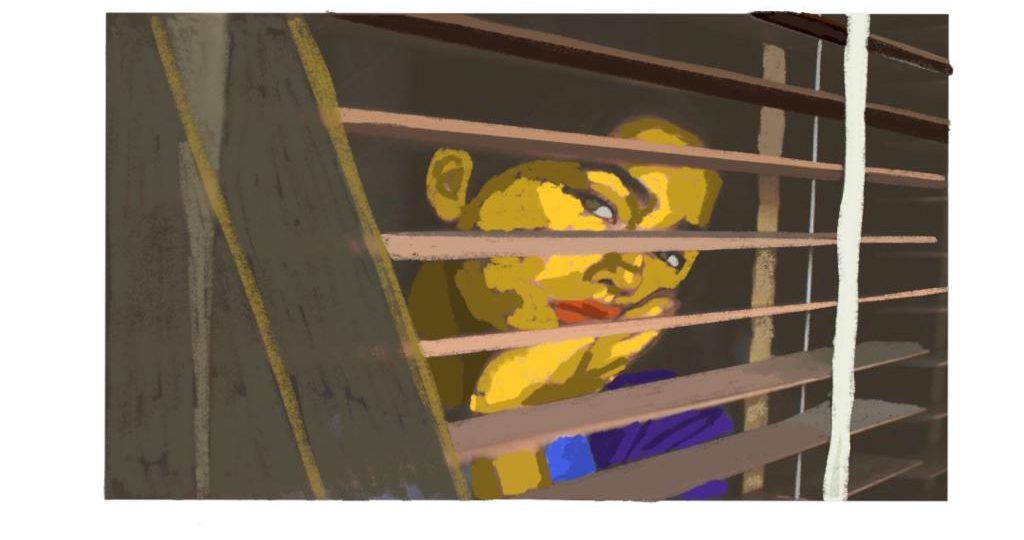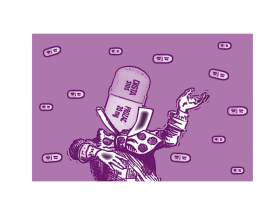Free falling, a light in the far distance seems to scream at you. Reminiscent of the scene in the animated film, Sinbad: Legend of the Seven Seas, the Book of Peace is out of reach, and as you leap to grab hold, you plunge into Tartarian darkness. Only unlike Sinbad, who washes up on a miniscule island, you continue to drop into a nothingness that will never truly exist. And then suddenly, you awaken, sweat droplets ingraining their panicked scent onto the red Iowa State sweatshirt you stole from your father, your body having gone into fight or flight mode, as if you were actually falling. Some say that your subconscious plays tricks on you, and the fearfully familiar dream of falling is a representation of your soul’s path to death. As the story goes, the jolt that awakens you is what saves your soul. It seems so chilling that I personally would rest more easily knowing it was merely a mariner’s tale.
They are a curious thing, dreams. They occupy a large part of my nights. To say I find them fascinating would be an understatement, and yet, I desperately wish not to seem cliché when expressing this sentiment. Sometimes it can be difficult to tell if a dream is meaningless, or if it could hold the key to facing any adversities in your life. For centuries, civilisations around the globe have taken to dream interpretation, and some, such as Artemidorus’ Oneirocritica (The Interpretation of Dreams) form part of our only links to understanding the beliefs of Graeco-Roman antiquity towards the meaning of dreams. Artemidorus believed dreams serve a special purpose, whether it was a message from the supernatural or a premonition of the future. They were expected to yield important solutions to everyday problems in life, yet not every dream was immediately understood or even meant to be understood. A dream that had no meaning was one that was “active only while one sleeps”, arising from irrational desires or extraordinary fears. These dreams of desire and fear, dreams that form a great part of contemporary interests, are dismissed by Artemidorus. For him, the more significant dreams were predictive and almost always a sign of the divine; the inexplicable was broken down with the repetitive nature of dreams, as people began to spread their subconscious thoughts through the oral tradition. Alas, the topic of this article falls under the category of meaningless dreams – forget Artemidorus.
Though it doesn’t give me particular joy to reference Freud, some of his analysis of the psychology behind dreams does resonate with me. Fairy-tales, fiction, and poetry can often influence our dreams, and this relation is not accidental. Sometimes the insight of a poet can analytically understand the process of dreams and becomes the instrument for their translation into words. Fear can take the form of situations, objects, but often presents itself in the characterisation of people. Sometimes the monster under your bed is someone who is present in your everyday life. A text that I feel reflects this quite clearly is ‘The Magician’s Nephew’ by C.S. Lewis. The queen of Charn (also known in the series as the White Witch), Jadis, is the personification of evil. Her magical powers and superhuman strength wreak havoc on both Charn and earth; she encompasses the fear that accompanies the descriptions of Lucifer – beautiful yet innately wicked. The children fear her and are simultaneously entranced by her: ‘Digory said he had never in all his life known a woman so beautiful… “This is a terrible woman,” thought Polly. “She’s strong enough to break my arm with one twist”.’ Indeed, there seems to be an element of irresistibility when it comes to fear, something that lures you in and sinks its teeth into your nightmares.
Freud contends that dreams cannot consist of pure delusion; for example, if one is afraid of a murderer in a dream, the murderer is indeed imaginary, but the fear of murder is very real. Yet perhaps the most terrifying part about dreams can be our inability to discern whether we are really asleep. I am rather late to the party, but recently I watched The Matrix for the first time. In a world where the majority of the population is “asleep” (unaware of the reality that the world they live in is a simulation), fear only exists with the red pill of truth. As someone who has had the ability to lucid dream from the age of fifteen, it is a reassurance to be aware of every dream I have, to watch the action unfold and know I am dreaming; but now, there is always a part of me that wonders if the reality I believe myself to exist in is even real. This begs the question; will the top ever stop spinning? In an attempt to scramble both of our brains, dear reader, the movie Inception demands to be spoken about in an article about dreams. Without actually trying to figure out which theories surround the concept of entering the subconscious of someone’s dream, I want to focus instead on the blurred lines, the lack of clarity between different levels of dreams, and thereby, the subconscious. Cobb’s refusal to know what the different levels of dreams consist of comes from a fear that his subconscious will betray him by showcasing a violent apparition of his dead wife. That we have such little control over the direction that our subconscious veers off to, is an indication that fear, similar to any negative emotion, runs deep.
Stress, fear, and anxiety all work together and produce the most bizarre and interesting dreams. I have always said that humans and their animal counterparts (pets), after spending a significant amount of time together, begin to share the same mental illnesses. Did I read this on a blog post and immediately claim it as my own? Maybe. As such, I would like to place a personal example up for discussion. My cat, bless her wee soul, has been affected by separation anxiety as a result of the lockdowns in 2020. This causes her to occasionally yank her hair out in clumps. (Not to worry, I have been giving her hemp seed oil drops and it has worked wonders for reducing anxiety.) A few nights ago I had a dream in which I woke up to loud meows and discovered patches of missing fur all over my cat’s back. Now, of course, my cat, in what we perceive to be reality, is absolutely fine. What this dream does is perhaps reflect a mirror image of my own anxieties. I am the one repeatedly picking at my metaphorical skin, pulling out my hair, and screaming in the middle of the night. And that is what I find the most terrifying about dreams. A manifestation of stress depicted in a horrific, visceral image. Underneath it all, dreams express a subconscious reality that is able to encapsulate our fears, and often feed the monster lying in wait for an unsuspecting soul. The only way to fight the monsters is to figure out the fears they represent, and then take them out.
Art by Desiree Finlayson




